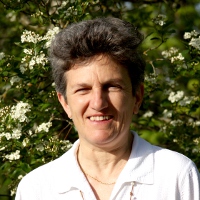A 2009 workshop piloted the use of scenario planning for NPS natural resource management planning in the face of climate change. Wind Cave National Park (WICA) served as a case study in this workshop. Available information and expert opinion were used to construct a set of plausible, future scenarios. Future strategies were then derived based on common themes that emerged from the scenarios. Workshop participants found the process extremely useful for fostering conversations about natural resource management in a changing climate, but they concluded that a more rigorous process for building and validating scenarios would make the resulting conclusions more robust to public scrutiny.
This document the application of such a process to WICA. Major uncertainties encountered when constructing scenarios for the 2009 workshop included how the direct effects of CO2 on plants might mitigate warming effects, as well as whether park management practices would amplify or moderate climate-driven vegetation changes. MC1, a dynamic global vegetation model, incorporates these and other important processes (e.g., grazing) to simulate vegetation in future climates. We calibrated MC1 to the WICA landscape and then used this calibrated model to simulate vegetation in three future climate scenarios combined with a variety of fire and grazing scenarios chosen by WICA natural resource management staff.
Critical implications of these simulations are:
1. The current forest-grassland balance may be maintained, but at reduced tree biomass, with prescribed fires provided that targeted tree mortalities are attained. Moderate variation in the frequency and intensity of prescribed fires did not have large effects on these simulations. Prescribed fires have the potential to improve or maintain forest health, making it more resistant to mountain pine beetle outbreaks and wildfire, while preventing the incursion of trees into grasslands. Fire suppression would have the opposite effects.
2. The distribution of forest vs. grassland at WICA is quite sensitive to fire. Although no model can capture all the complexities that determine fire effects, increasing temperatures and concomitant drying of fuels are virtually certain. Simulations suggest an increase in frequency of high fire danger from 12 days per year in the 20th century to 20-100 days per year by 2100.
3. Future forage production was little impacted by grazing when up to 50% of aboveground production was removed, but prolonged 70% removal rates depressed productivity. Future annual forage production varied among climate scenarios, increasing in one and decreasing in another. Mid or late summer declines in plant production due to greater heat and drought could increase soil erosion and lead to late-season food shortages for grazers. Increased interannual variation in forage production supports the adoption of more conservative grazing regimes, particularly after 2030.
4. Given uncertainties in the rate of increase in greenhouse gases and the response of local climate to this forcing, long-term monitoring of production phenology, range quality, species composition, and, in wooded areas, tree density and growth and seedling establishment and survival is of great importance.

